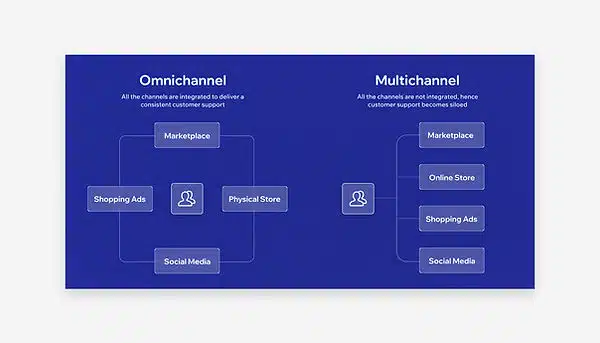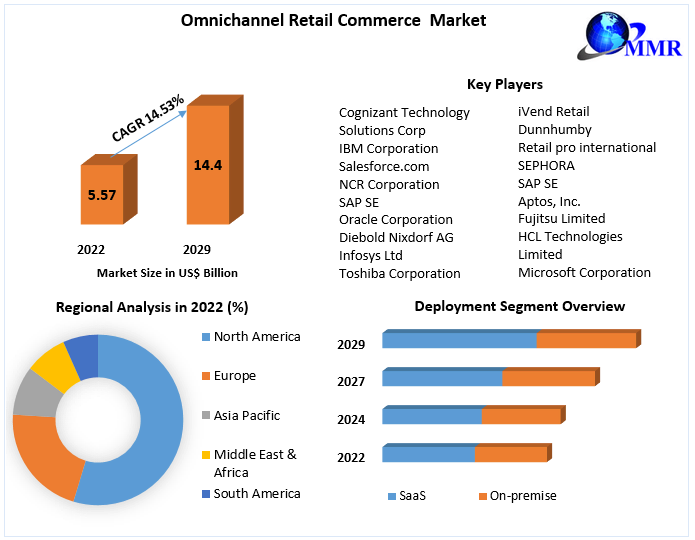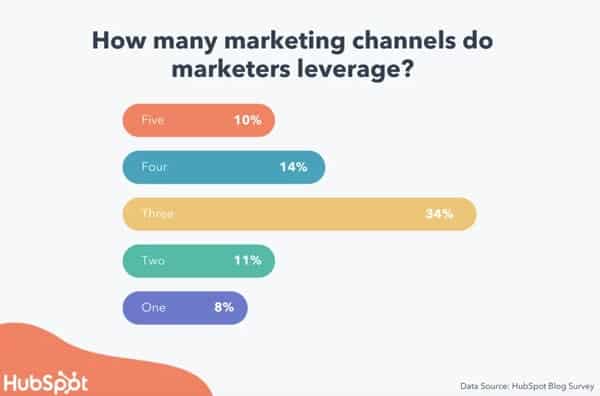
Every business owner desires to make a profit. One of the best ways to do this is by passing the correct information to the right people and, lastly, through the right channels.
In fact, you can reach the right audience through different channels, ensuring your customers have the same experience regardless of the marketing channel. This approach is called omnichannel marketing.
Single-channel retailers communicate and engage their customers through just one channel. However, this interaction approach is no longer as practical as 10 to 15 years ago.
The world is changing, and businesses can now, through omnichannel marketing, reach their dream clients through multiple channels.
This article covers the latest information on omnichannel marketing statistics, trends, and strategies. You will discover how vital and effective an omnichannel marketing strategy is critical to your marketing campaign.
Omnichannel vs Multichannel Marketing

It is very easy to confuse omnichannel marketing for multichannel marketing, and since they have similarities, they are very different strategies.
Both omnichannel and multichannel marketing involves using multiple marketing channels to reach your customers, but the difference between both terms is the focus.
Multichannel marketing is about being everywhere that your intended audience is and marketing through various channels. It focuses more on having both an online and offline presence.
On the other hand, omnichannel marketing focuses more on the customer’s experience. It is more like an upgraded version of multichannel marketing because you would be everywhere your intended audience is.
However, you would also ensure your message, brand voice, and tone have an uninterrupted and consistent flow regardless of the marketing channel used.
In summary, omnichannel marketing is a marketing strategy where marketing channels are integrated.
Latest Omnichannel Marketing Statistics in 2024
1. The global omni-channel market size, valued at $5.57 billion in 2022, is expected to expand at a CAGR of 14.53% from 2022 to 2029. (source)

2. About 85% of digital customers begin purchasing on one device/channel and finish it on another. (source)
3. Companies with weak omnichannel marketing engagement only retain about 33% of their customers. However, companies with strong omnichannel marketing engagement retain more than 89% of their customers. (source)
4. 90% of customers prefer an omnichannel experience with seamless service between the various communication methods. (source)
With the change in market preferences, as part of the effects of the COVID-19 pandemic, consumers’ preferences have also changed. Consumers are now drawn to brands that ease their product research and purchasing process. They want seamless and “stress-less” interactions with brands they deal with.
5. The purchase rate of an omnichannel marketing campaign is higher than a single-channel marketing campaign by 287%. (source)
6. 59% of consumers acknowledge using Google to research products before purchasing the item in a physical store. (source)
7. 79% of customers will stop purchasing from a brand if they have one negative customer experience. (source)
8. About 72% of consumers expect companies to remember their purchase history irrespective of the method of communication in use. (source)
9. Companies using omnichannel marketing have a 90% higher customer retention rate than single-channel marketing. (source)
10. More than half of internet users prefer shopping online via mobile. Nearly 80% of consumers have purchased using a mobile device in the last six months. (source)
Mobile devices are one of the most common means of communicating with a brand because they are easily accessible and convenient. Most consumers prefer to use their mobile devices to interact with a business.
It is very critical to ensure that your digital marketing channels are mobile-friendly. For example, you should design a mobile-friendly website for your business. Also, invest in online platforms that are easily accessible on a mobile device.
11. Nearly 40% of customers in a traditional brick-and-mortar store came via a mobile device. (source)
12. Omnichannel marketing campaigns have an increased order rate of 492% and a greater chance of conversion than a single marketing campaign. (source)
13. About 35% of business managers in 2021 claim to have successfully achieved omnichannel personalization. (source)
A tailored experience is needed to create a lasting impression on the minds of your audience and visitors, hence the need for omnichannel personalization.
14. About 69% of customers expect consistent and persistent content from brands across multiple digital and in-person channels. (source)
15. About 90% of consumers use multiple channels to engage with businesses and get information before purchasing. (source)
16. About 60% of millennial customers expect retail brands to provide consistent customer experiences across various marketing channels. (source)
17. 47% of e-commerce companies in Europe and North America agree that an omnichannel marketing campaign is significant. (source)
18. Limited access to data, improper marketing attribution, and customer privacy infringement are the top 3 significant informational challenges in omnichannel marketing. (source)
19. About 82% of social media marketers repurpose their content across various channels. (source)
20. About 77% of customers are more likely to increase their spending with brands that they feel relaxed with. (source)
21. 8 out of 10 B2B marketers say omnichannel marketing is more effective than traditional (single-channel) marketing. (source)
22. 83% of B2B marketers agree that omnichannel marketing is a better way to prospect new business than traditional (face-to-face) approaches. (source)
23. About 20% of B2B buyers revealed that they are willing to spend more than $500,000 on a fully digital sales model. (source)
24. 75% of B2B buyers will buy from a supplier again if the supplier has omnichannel capabilities. (source)
25. A retailer that doesn’t implement omnichannel marketing into their overall marketing strategy makes around a 10-30% loss of sales. (source)
26. Omni-channel campaigns have experienced up to an 18.96% engagement rate compared to a 5.4% engagement rate when using a single channel. The level of engagement a business has, in-person and digital, determines how much sales will eventually be made. (source)
27. Of 1000 shoppers, 57% confessed to visiting a retailer’s website (or mobile app) while in the physical store. (source)
28. About 7% of customers were online shoppers, 20% were store shoppers, and 73% preferred to shop through omni-channels. (source)
29. The global omnichannel retail commerce market is expected to grow at a compound annual rate of 21.48%. This is approximately $2.99 billion (2017) to $11.01 billion by 2023. (source)
30. The purchase frequency on an omnichannel marketing campaign is 250% higher than that of a single-channel campaign (source).
31. Businesses that utilize an omnichannel strategy are 3x more likely to experience a significant increase in revenue and 4x more likely to notice unwavering customer support and loyalty. (source)
32. Customers with an omnichannel experience spend 13% more than a customers with a single-channel experience. (source)
33. About 46% of shoppers prefer to check a retailer’s online inventory before heading to the physical store. (source)
34. About 92% of marketers leverage multiple channels for better results. (source)

35. 71% of customers expect a personalized experience from brands they engage with or purchase from. (source)
These consumers are more willing to develop a consistent, personalized relationship with brands that implement effective omnichannel strategies. The entire purchase journey should be stress-free and easy.
36. Companies that focus more on personalizing customer experience gain 40% more in revenue than companies that don’t do so. (source)
37. 76% of consumers conclude that they will be disappointed and more likely to leave a brand if they don’t get a unique/personalized customer experience. (source)
38. Nearly 85% of shoppers make an unplanned additional purchase when they go in-store to pick up an online order. (source)
39. 53% of retail brands use tools to ease their selling experience. (source)
40. 43% of retail brands are interested in showing their available online inventory in offline stores. (source)
41. In light of seamless interactions across multiple channels, 47% of consumers acknowledge that they would want to check out online and still return in-store. (source)
42. Marketers with an omnichannel strategy experience a 9.5% year-over-year increase in annual revenue. (source)
43. About 75% of consumers want consistent omnichannel communication across all channels and platforms, whether in-person or digital. (source)
44. Marketers with an omnichannel strategy experience a 7.5% decrease in cost per customer contact year-over-year. (source)
45. About 30% of the world’s population (approximately 2.14 billion people) are more comfortable purchasing goods and services online. (source)
More people prefer to make purchases online. One of the main reasons for this choice is convenience. Because the world is now getting even more digital, many consumers are gearing toward becoming digital buyers.
Omni-channel marketing experience ensures that your customers enjoy an accessible and connected experience, regardless of the multiple channels used in interaction.
Top Omnichannel Marketing Trends in 2024
When it comes to business, the rules of the game change. The most innovative companies stay up-to-date on the latest trends in marketing, including omnichannel marketing.
1. Brick-and-mortar Stores are Having a Comeback
Due to the Covid-19 pandemic, many physical stores were forced to close down and move online.
Consumers began to make online orders for what they needed.
However, the need for brick-and-mortar stores is coming back massively.
Many consumers — millennials and Gen-Z — still prefer to shop in person, irrespective of the online stores.
One of the primary reasons is that customers want to interact directly with the wanted items before they finally make a purchase.
Another reason people prefer brick-and-mortar stores is because they want to avoid shipping delays and extra delivery costs.
Brick-and-mortar stores allow local retailers to develop a presence in their communities compared to the struggle of competing with bigger competitors online.
According to a recent study, 32% of brands are now working to establish in-person experiences through pop-ups or official physical stores.
As a marketer or business owner, you should understand that the omnichannel marketing approach isn’t restricted to only online customer experiences. It also involves moving beyond the digital space and allowing in-person experiences.
2. The Power of Social Media
Social media is notorious for spreading news like wildfire. Brands use social media to boost their target audience reach, maintain customer support, and boost their reputation.
However, social media now offers more than that.
Retailers can now sell directly on social media through built-in shopping features. For example, Instagram supports retailers by providing seamless shopping experiences via the app.
It is no news to include social media in your marketing channel mix. Social media allows more sales options, and it is only natural that consumers engage more with brands via social media.
3. Perfect Blend of Online and Offline Experiences
According to the statistics listed above, most customers prefer to enjoy both online and offline experiences when dealing with a brand.
For example, most customers may want to visit your website while in your physical store.
One prominent use of this strategy is the “buy online, pick-up at store” option.
After the pandemic lockdown, consumers want in-person shopping experiences. This is why you should utilize the full potential of both online and offline marketing channels.
59% of consumers want to look at a product online and buy at the physical store. You should carefully integrate your online and offline channels to give the consumer a seamless transaction.
The in-person shopping experience allows your customers to interact and engage — see, touch, and feel — with your products.
4. Personalization
Personalization is an art that must be incorporated into every brand’s marketing strategy.
It is essential to understand customers’ buying patterns and habits to deliver the right services at the right time correctly.
Personalization plays a vital role in influencing customers’ final decisions.
There are many benefits to personalization, and some of them are;
- Increased level of engagement.
- Motivation to make a purchase.
- Earning more repeat customers: A repeat customer is a loyal client who has repeatedly purchased from your brand.
- Less waste of time and resources.
- Retargeting of interested viewers.
Through customer data and analytics, businesses can create personalized experiences for customers.
5. Video Content Marketing is Here to Stay
According to statistics on video marketing, over 50% of consumers testify that video content has helped them better understand what they intend to buy.
Through social selling, marketers can now sell visual content on social platforms. For example, it is now possible for brands to sell directly on Instagram and TikTok videos.
A consumer can buy the product or service by simply tapping on the video to see more information on the product.
In most cases, after tapping the video, the customer may get redirected to the website to continue purchasing.
6. Multi-channel Attribution
Multi-channel attribution allows you to collect real-time data across your various marketing channels. The term is not new to digital marketers.
But what is new is the inclusion of offline data. Marketers want to verify that their online marketing campaigns also result in offline sales.
The data collected will help give a complete view of the customer’s journey.
According to Chris Cantino from Color, you can “deploy cross-channel analytics to study your omnichannel performance by collecting data from your various marketing channels.”
With multi-channel attribution, you can now track the success of your omnichannel marketing campaign.
7. Using Customer Data to Drive Satisfying Omnichannel Experiences
Data is a powerful tool for properly analyzing and understanding customers at each stage of their journey.
As the latest trend, customer data and analysis helps in the following ways;
- Personification.
- Tracking the progress made from time to time.
- Predictive analysis.
- Customer service or support: The correct data helps businesses get proper product feedback and reviews. This feedback can then be used to improve the quality of the service offered.
- Targeted marketing campaigns: Through customer data, businesses can adequately segment their customer base and target or focus on a particular demographic.
Best Omnichannel Marketing Strategies to Implement in 2024
An effective omnichannel marketing strategy allows you to create an uninterrupted customer experience across all your marketing channels. A complete omnichannel marketing campaign should include both your online and offline touchpoints.
To build customer loyalty, your business needs to give a consistently positive customer experience across all marketing channels.
The four most important pillars to having a successful omnichannel strategy include:
- Sales
- Marketing
- Positive experience or fulfillment
- Operations
How to Create an Effective Omnichannel Marketing Strategy
1. Know Your Customers
Understanding who your customers are and what they want from you gives you a clearer picture of how to position your marketing strategies. You cannot know your customers by simply assuming your information.
Do a simple survey to know where your customers like to hang out, what marketing channels they respond to the most, and the experiences they would like to have concerning the purchasing process.
With the information you get, you can know which channel to focus more energy on and map out your customer’s journey. Remember that in omnichannel marketing, the customer is the main focus.
2. Develop an Omnichannel Journey
After clearly understanding your customers and getting enough information that could buy them over, the next thing to do is draft or map out your techniques.
Know exactly what method or approach your customers would prefer and go for it.
Also, decide on the channels that would yield the best results for your brand.
Do not leave out any details in this overall map; your customers must be appropriately led through the different touch points until they reach the final destination.
3. Support Online Research in Your Physical Store
The statistics above show that many consumers like to use their phones to check out the online inventory, even in physical stores.
The goal is to create a seamless experience for your customers.
One of the best ways to do this is to offer Wi-Fi access in your physical store to help ease their purchasing process.
4. Segment Your Audience
This is an essential strategy because, as a brand, you need to know precisely what audience group should be fed with what content.
There are 4 basic ways of customer segmentation: Demographic, Geographic, Psychographic, and Behavioural.
Demographic segmentation groups your customers based on age, gender, occupation, or income level.
Geographic segmentation is based on the customer’s location.
Psychographic segmentation is the grouping based on the customers’ personality traits, lifestyle, or habits.
Lastly, behavioral segmentation is the grouping based on how the customers interact with products or have interacted with products in the past. You could use information such as their shopping habits or history to determine this.
This information can then coin out the right personalized and customized content for each buyer.
5. Give Out Unique Content
Although your marketing channels should be integrated, it doesn’t mean you should copy and paste the same content into each marketing channel.
Your customers interact with different marketing channels differently.
For example, how a customer may view and respond to an Instagram post is not the same way they would react to an email. Craft unique content (with a similar message) for each channel.
6. Update Your Customer Service
To ensure a seamless transaction for your customers, update your customer service. Your customers will likely leave if they have a terrible customer experience.
Also, properly integrate your marketing tools (including payment systems) so it focuses on easing the customer’s buying process.
This also involved providing access to as much valuable information as possible.
Boost Your Sales With Omnichannel Marketing
Giving your customers an uninterrupted experience increases your sales. Customers are attracted to brands that offer them less stress.
With the change in consumer behavior, many businesses opt for an omnichannel marketing strategy.
However, ensure that you can follow up on each marketing channel. Always ensure that they are integrated properly to give the best customer experience.
Most importantly, the above omnichannel marketing statistics can help you plan your strategy for better results.

Related Posts:
- 47+ Important 4-day Work Week Statistics You Must Know In 2024
- 73 Revealing Workplace Distraction Statistics [2024]
- 50+ Latest Life Coaching Statistics And Huge Trends In 2024
- 40+ Top Workplace Conflict Statistics You Should Know [2024]
- 36 Interesting Social Worker Burnout Statistics for 2024
- Ultimate List of Performance Management Statistics & Trends in 2024 (Full Report)
- 46 Crucial Amazon Advertising Statistics, Trends & Strategies For 2024And Beyond
- 41+ Important Communication Skills Statistics & Trends For 2024
- 15 Crucial Body Language Statistics To Know (Fun Facts)
- 39 Best Emotional Intelligence Statistics To Know In 2024
- 29+ Important Fear of Public Speaking Statistics To Help You In 2024
- 37+ Best Copywriting Statistics & Trends to Help You in 2024 And Beyond
- 51+ Important Podcast Advertising Statistics To Know In 2024
- 101+ Important Social Media Advertising Statistics & Trends To Help You In 2024
- 100 Top Digital Marketing Vs Traditional Marketing Statistics To Know In 2024
- Ultimate List of Sales Funnel Statistics To Help Improve Conversion Rates
- 67+ Virtual Event Statistics And Trends All Marketers Need To Know
- Latest Multichannel Marketing Statistics and Trends
- 45+ Multi-Level And Network Marketing Statistics You Need To Know
- 51+ B2B Lead Generation Statistics, Facts, Trends, Benchmarks, And Market Size
- 50 Trade Show Statistics and Trends to Boost Your Business in 2024 and Beyond
- 47 Useful Organic Vs Paid Search Statistics To Know In 2024
- Pay-Per-Click Statistics, Trends & Benchmarks (Amazon, Social, Google & Search Ads Stats)
- 55 Direct Mail Marketing Statistics, Trends, and FAQs For 2024
- 51+ Teamwork & Workplace Collaboration Statistics To Boost Your Employee Performance
- 71 Most Important Workplace Communication Statistics To Know In 2024

